To celebrate the unsung Charlton artist’s birthday…
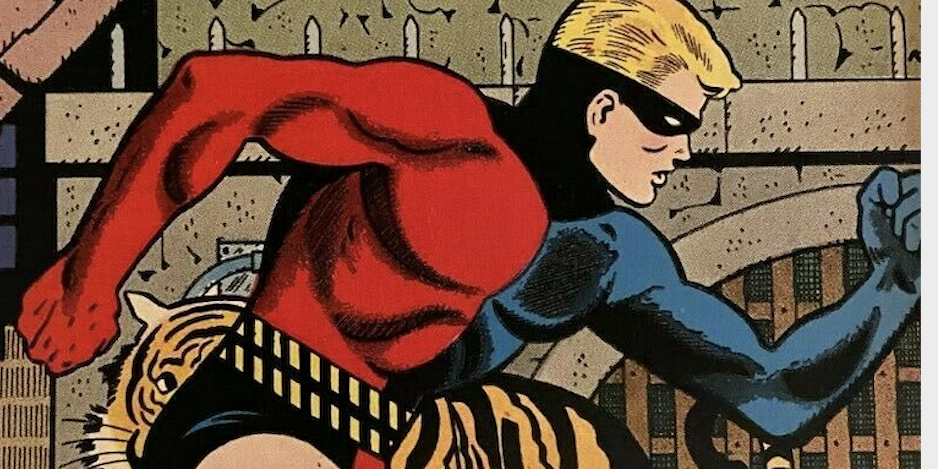
—
UPDATED 1/7/25: The late Pete Morisi was born 97 years ago! Perfect time to re-present this column from 2021. Dig it. — Dan
—
By PAUL KUPPERBERG
As a 13-year-old first coming across the Charlton Comics work of writer/artist PAM, I knew that whoever this creator, known only by their initials, was, he had it all figured out. There was something familiar and comfortable about his clean, open style and hard, defining line. His storytelling was solid and the composition of his panels no-nonsense. His backgrounds could be sparse or nonexistent, sometimes even weirdly impressionistic, and his characters seemed a little posed; someone once wrote that people “often resembled a drawing of a sculpture of a person.” But it worked.
PAM was, I later learned, Pete A. Morisi (Jan. 7, 1928–Oct. 12, 2003), a Brooklyn-born artist who, more than half a dozen years into what appeared to be a successful career in comics, fulfilled a lifelong dream by joining the New York Police Department and spending the next 20 years in blue. The pseudonym was an effort to keep his two professions separate.
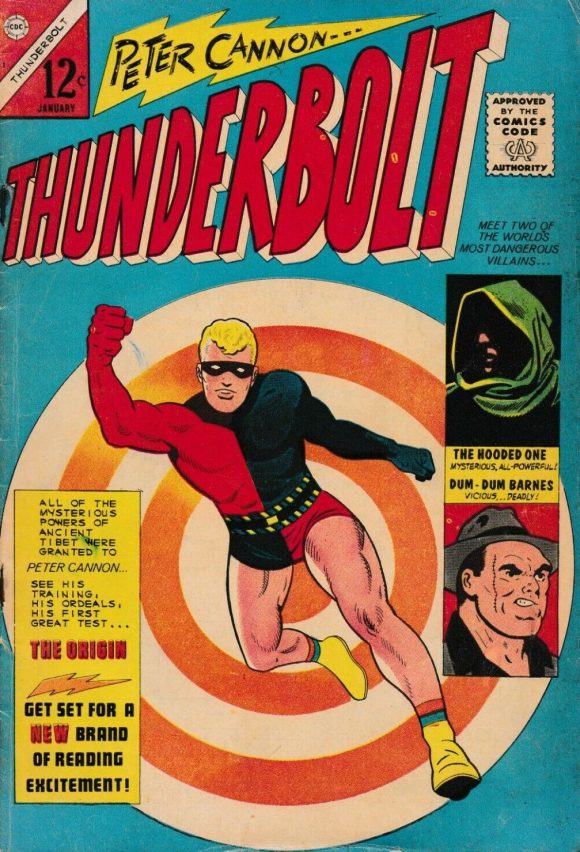
Pete is best known for his creation of Peter Cannon, Thunderbolt, part of editor Dick Giordano’s mid-1960s “Action Heroes” line, along with the revivals of Captain Atom and the Blue Beetle, plus Peacemaker, Nightshade, the Fightin’ 5, and others. But Pete had been plying his trade since the 1940s, writing and/or drawing for Marvel, Harvey, Lev Gleason, Quality Comics, and others in all genres all across the board.
DC Comics bought the rights to the Charlton characters in 1983 and in 1992 gave him his own title, Peter Cannon, Thunderbolt by writer/artist Mike Collins and inker Jose Marzan Jr. that lasted 12 issues. I was the editor of that series (and would later get to write Thunderbolt in a Charlton heroes’ team-up story in Justice League Quarterly, also with art by Collins, this time inked by Eduardo Barreto), and was fortunate enough to spend a very entertaining lunch with Pete and Dick Giordano at New York’s Society of Illustrators, being regaled by tales of early comics and old Charlton. If I hadn’t already been a fan, that afternoon would have made me one.
Here are 13 ESSENTIAL PETE MORISI STORIES:
1. Peter Cannon… Thunderbolt (Charlton Comics, 1966-67). Rather than select a single issue or story, I’m going all in on Pete’s most famous work, who starred in Peter Cannon… Thunderbolt #1 (Jan. 1966), which then took over the numbering of the cancelled Son of Vulcan for #51–60 (March/April 1966 – Nov. 1967).
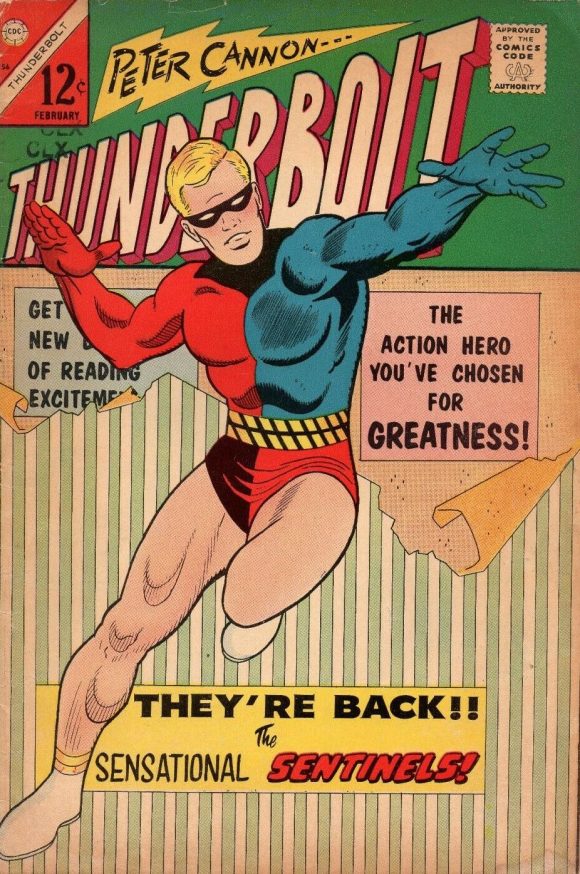
Peter’s parents were part of an American medical team that died fighting the Black Plague in the Himalayas. The child was raised in a lamasery and trained to the peak of physical and mental perfection before being permitted to learn the secrets of the ancient scrolls and how to harness and use the full potential of his mind. Now able to flex his brain, Peter and his turbaned companion Tabu Singh settle in America and hilarity, and superheroics with a supernatural tinge, ensue.
Peter Cannon… Thunderbolt was a solid series and lasted a respectable — for the short-lived Charlton Action Hero line — 11 issues (Captain Atom managed 12, Peacemaker only seven). Unfortunately, the pressure of holding down a full-time job with the NYPD and creating a monthly 18-page story got to be too much for Pete and Denny O’Neil and Pat Boyette had to step in for the last two issues, but Peter Cannon… Thunderbolt remains Pete’s most well-known creation.
—
2. Johnny Dynamite #11 (Comic Media/Charlton Comics, August 1955). Pete Morisi’s second most well-known creation (with writer Ken Fitch) was detective and sometimes spy Johnny Dynamite. Johnny wore an eyepatch (he lost his eye to a dame with a camera gun, see?), talked tough, and could kick ass with a film noir flair.
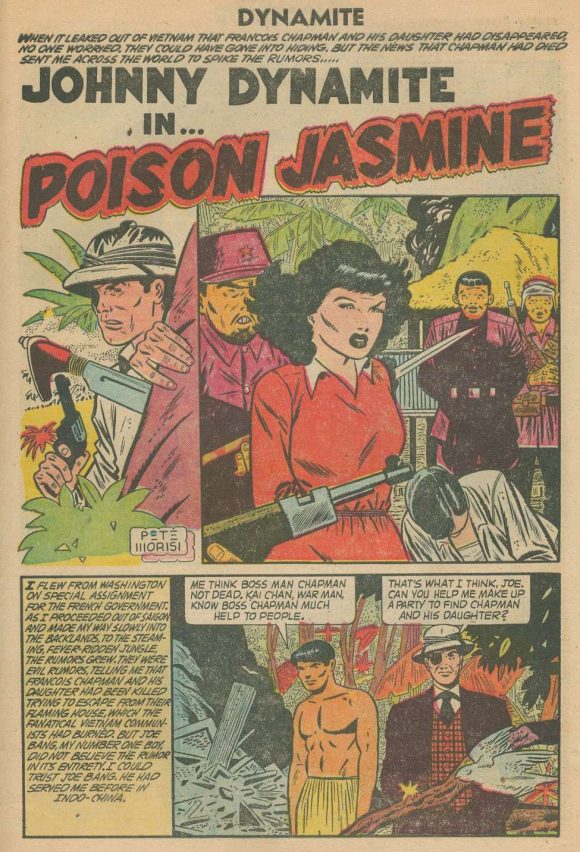
In “Poison Jasmine,” Johnny trades in his fedora for a pith helmet and the streets of the Naked City for the jungles of Viet Nam as he goes on a “special assignment” from Washington for the French government. The overwritten caption that opens the story isn’t a fluke; much of Johnny Dynamite featured copy heavy, and heavy handed, narration, but there was a charm to the strip, and a definite attraction to Pete’s covers, reminiscent of men’s adventure magazine covers.
—
3. Billy the Kid #12 (Charlton Comics, June 1958). Superheroes, detectives… and Westerns. Back when comics published every genre, Pete proved he could draw them all with equal proficiency and efficiency.
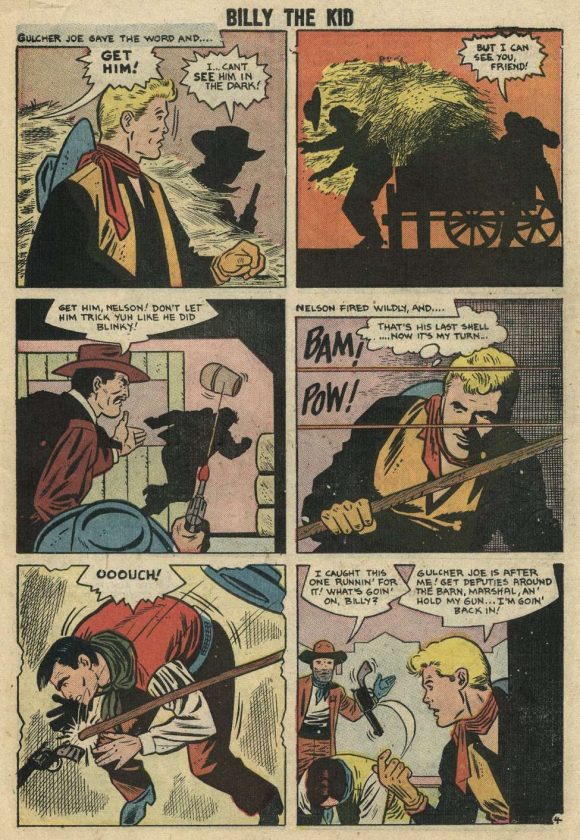
A page from the five-page “No More Notches” provides a nice example of his storytelling and a neat sampler of Pete’s tricks of the trade: medium shots, silhouettes, no or bare minimum/impressionistic backgrounds, and sharp contrast to direct the eye across the panels. The drawing may not have always been the best, but things were moving way too fast for the reader to notice, or care if they did.
—
4. G.I. Combat #1 (Quality Comics, October 1952). Superheroes, detectives, Westerns… and war! In “Killing Pitch,” a third-rate minor league baseball pitcher redeems himself in the eyes of his squad-mates by turning into a major leaguer with a hand grenade.

Set during the Korean War (or whichever conflict U.S. troops wore purple uniforms for), there’s not a lot to stylistically connect this story to the later work by PAM; the art is on the crude side and there’s no sign of that hard edge of contrast that would distinguish strips like Peter Cannon. But the storytelling and energy of his drawing is all there.
—
5. Green Lama #8 (Spark Publications, March 1946). There’s little more than potential in this strip penciled by 18-year-old Pete Morisi. “Treasure Trap,” a back-up strip in Green Lama, tells the tale of Billy and “Skipper,” a pair of seafaring pals who set sail for Rio de Janerio to make some quick dough.
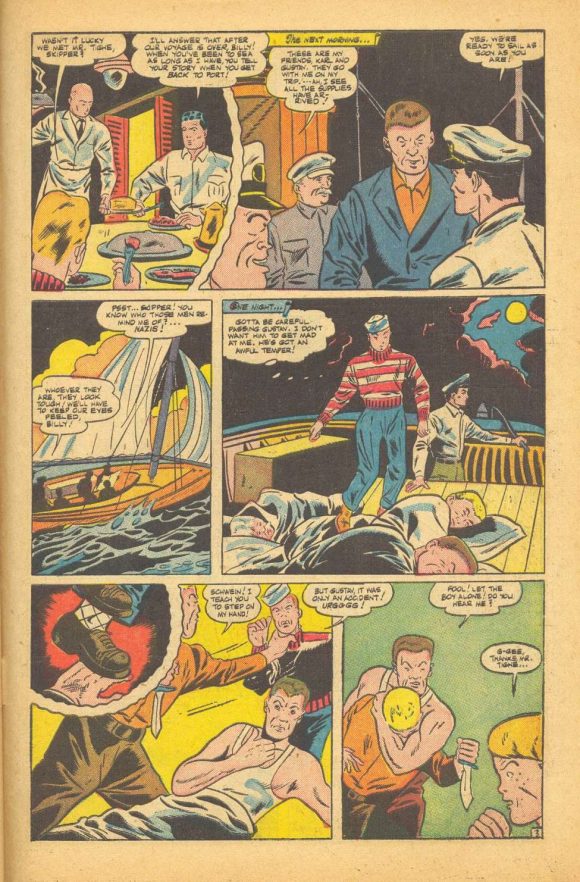
Most sources indicate Pete got his start in comics as an assistant on the newspaper strips Dickie Dare and The Saint before breaking into comics at Fox in 1948, but this 1946 story from Green Lama shows he made his debut even earlier. It’s also a rare instance of Morisi being inked by another brush, in this case that of Sal Trapani.
—
6. The Arizona Kid #12 (Marvel Comics, November 1951). “Famous young frontier scout” Davy Laramee, aka the Arizona Kid, is on the trail of “Killers Three” in this Atlas story. Pete drew the hell out of this one, with full backgrounds and great expanses of Western landscape. You can imagine him being assigned this script right after having seen a John Ford Western on the big screen and deciding to pay homage.
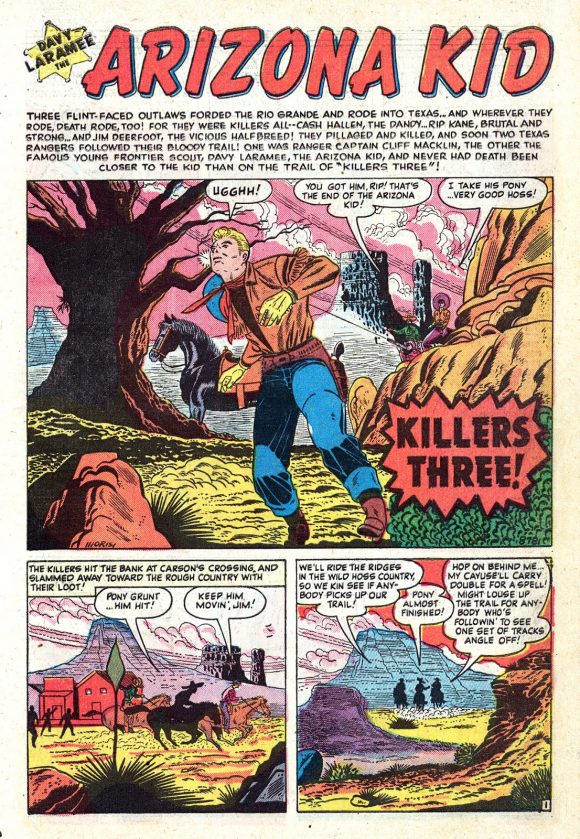
“Killers Three” doesn’t have a single shortcut or cheat in it. Morisi included every tree, cloud, rock, and clot of dirt in the background against which he planted a solid cast of expressive characters. This was the artist finally finding his style and direction, one that he would continue to develop for the next quarter century of his comic-book career.
—
7. Monster Hunters #1 (Charlton Comics, May 1975). If “Killers Three” was the embryonic Pete Morisi, “The Sea, Its Givings and Its Takings” is the mature artist at work, but one that raises the question of the influence fellow artist George Tuska had on his style over the years. It was a question Pete answered himself at that long-ago lunch at the Society of Illustrators.
During the 1950s, Tuska was considered an “artist’s artist,” one of the guys other artists looked to for style and influence. Pete said he respected George too much to just rip him off, so he wrote George for permission, which was granted.
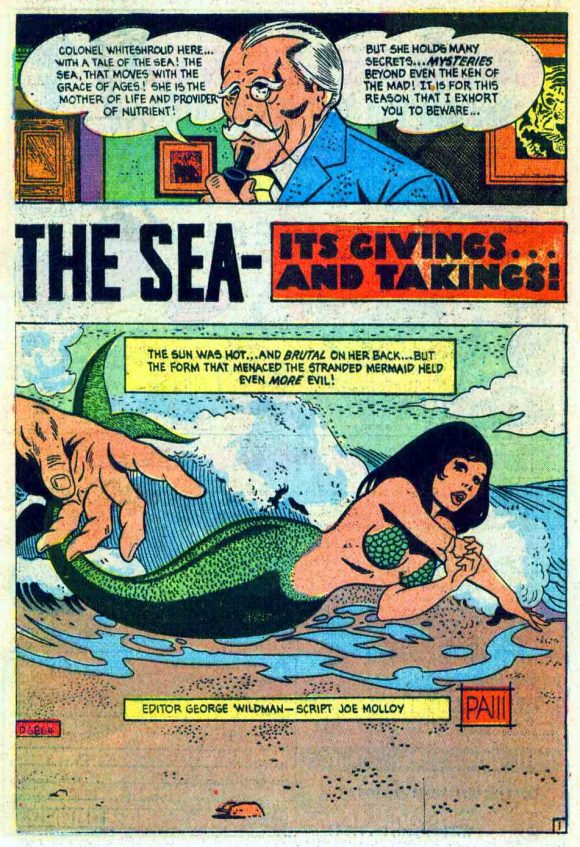
While Morisi had a distinct style of his own (check out Forbidden Tales of Dark Mansion #11, below), he was known to fall back on his Tuska swipes (the merman’s profile in Panel 3 is classic Tuska)… as well as his Alex Raymond files (there’s a lot of Dr. Zarkov in the human protagonist). But, as Wally Wood was known to say, “Don’t draw when you can swipe. Don’t swipe when you can trace. Don’t trace when you can paste-up.”
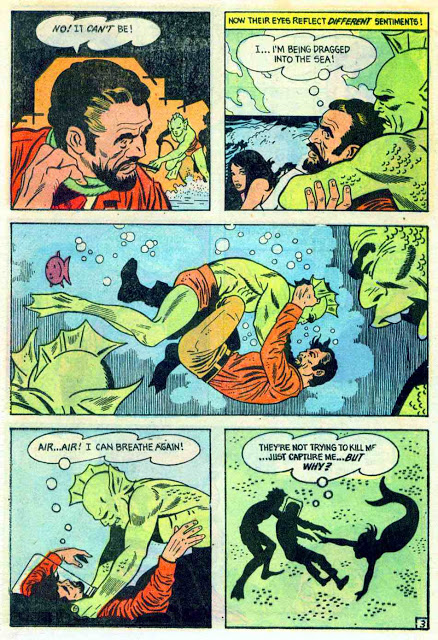
—
8. Ghostly Haunts #24 (Charlton Comics, April 1972). “The Fourth Guest” is an 8-pager that demonstrates Pete in full old pro/low page rate efficiency. In it, he tells this spooky story in medium shots and close-ups, with a single full figure shot on page 6. Backgrounds are minimal or non-existent and, while he foregoes silhouettes here, he makes ample use of blacks to fill space and pop figures.
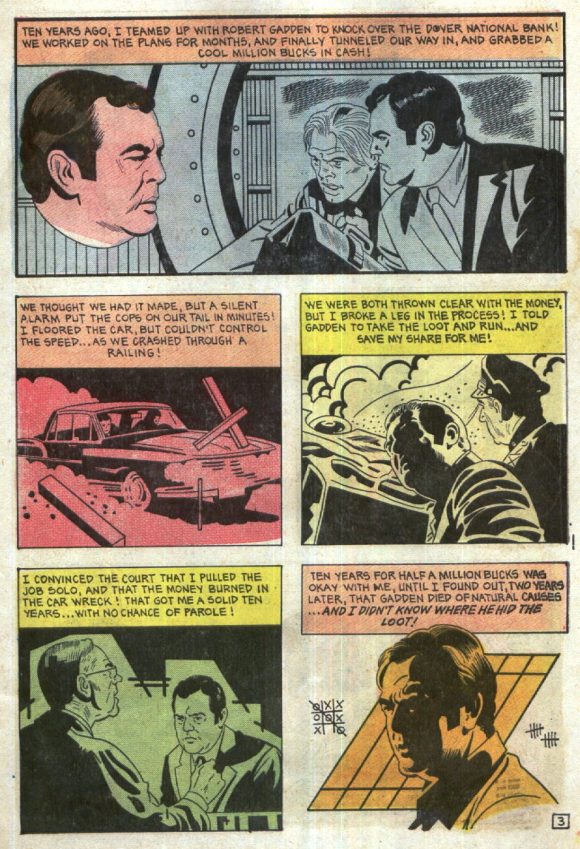
But none of these shortcuts distracted from the story or, more importantly, the storytelling. Like a lot of experienced professionals, he knew just how much he could leave out before the reader noticed or it started to hurt the story.
—
9. The Phantom #47 (Charlton Comics, Dec. 1971). A fun little one-page filler, “No Ghosts Here” is quintessential PAM in five panels, complete with a well-executed Stan Drake swipe in Panel 1.
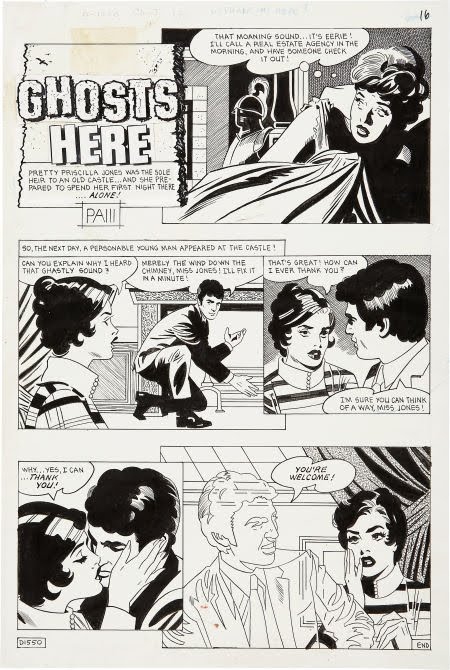
—
10. My Story True Romances in Pictures #11 (Fox, May 1950). I haven’t mentioned romance comics yet, but Morisi did those too. “Phony Love Affair” is the first of three stories I’ve picked that also show the evolution of the artist’s style, starting with some more or less generic “Golden Age” art out of the Mike Pepe/Carmine Infantino school.
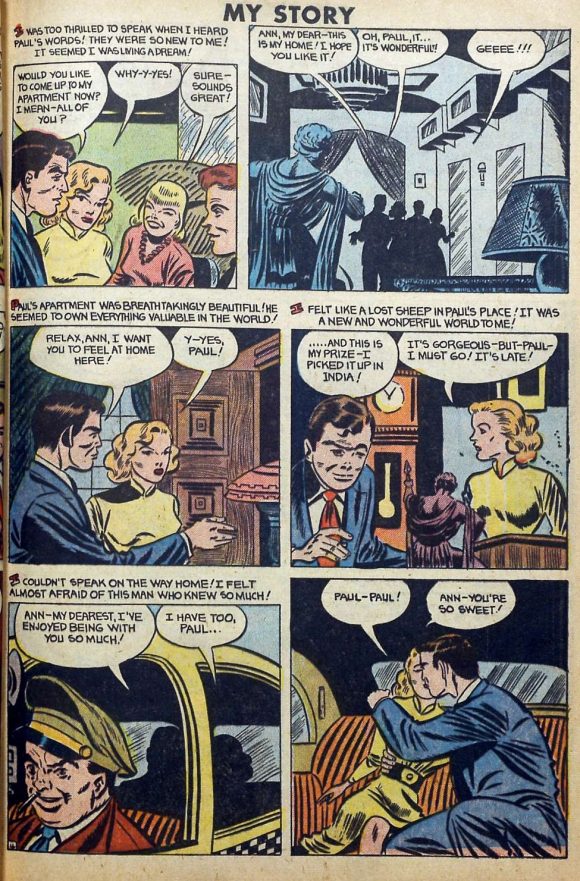
—
11. All True Romance #11 (Comic Media, March 1953). But in “Accused,” a story published two years after “Phony Love Affair,” the unique Pete Morisi style had already started to emerge…
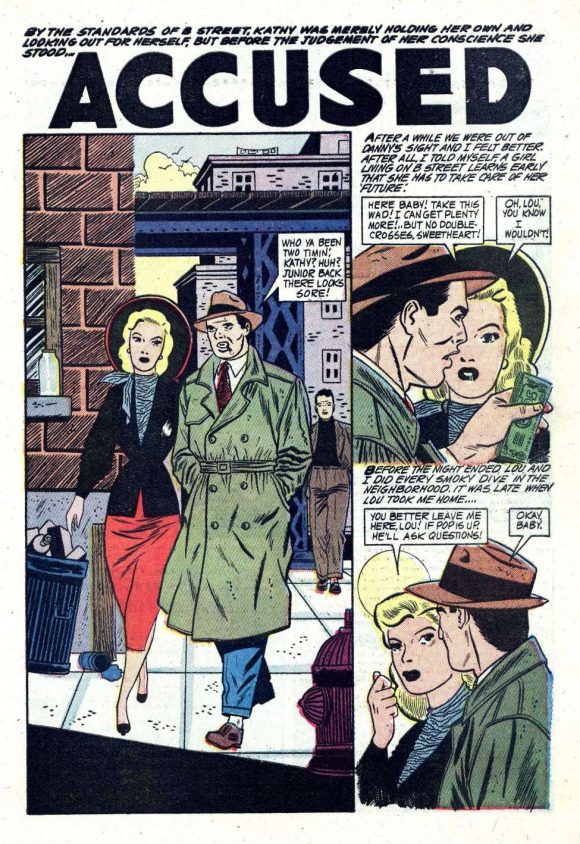
—
12. Forbidden Tales of Dark Mansion #11 (DC Comics, June-July 1973). … Until, by the time of “Bum Wrap,” readers could name that artist at a glance!
Pete obviously took the wraps off on “Bum Wrap”; it was, as far as I can determine, the only story he ever did for DC Comics (not counting the “Secret Origin of Peter Cannon, Thunderbolt” story he drew in the late-1980s that didn’t see publication until 2012’s Peter Cannon series from Dynamite). I can’t help but wonder if he didn’t see it as an audition piece for editor Joe Orlando in pursuit of future work at the company…?
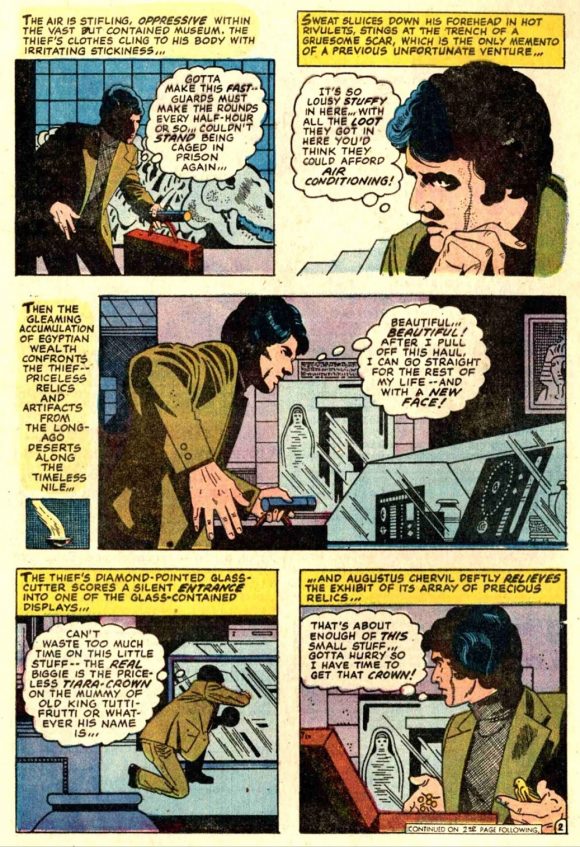
—
13. Davy Crockett #5 (Charlton Comics, March 1956). To end this birthday tribute to Pete Morisi, we head out West to the wild frontier for “Apache,” done right around the time he joined the NYPD. Pete’s work continued to appear regularly in Marvel and Charlton comics over the next couple of years, but eventually tapered off to nothing for more than five years until he returned with Peter Cannon, then disappeared again until the early- to mid-70s, coming back with a handful of stories.
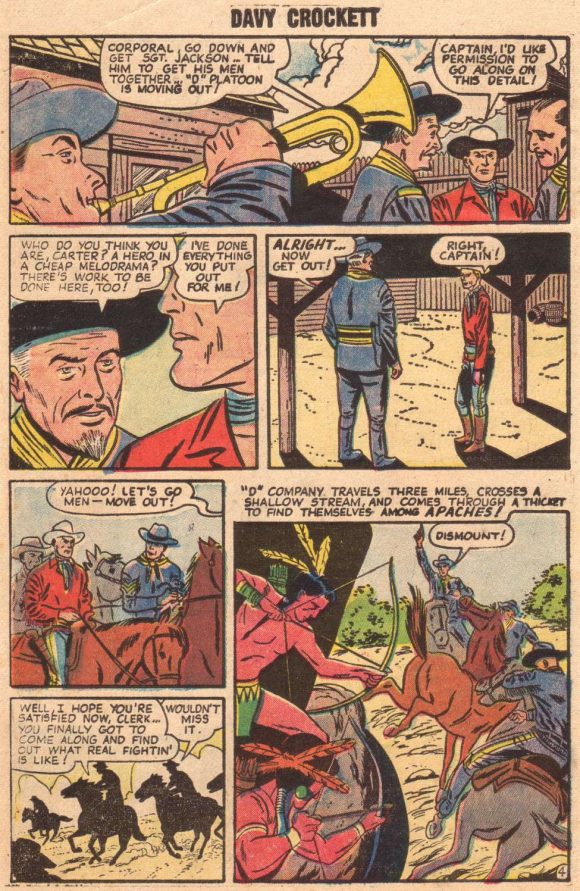
As his 1980s “Secret Origin of Peter Cannon, Thunderbolt” proved, Pete hadn’t lost any of his chops in the interim. If anything, he’d gotten even tighter and slicker. But while he was no longer doing comic books, Morisi never completely laid down his pencil; after retiring from the NYPD, he contributed illustrations to his hometown newspaper, the Staten Island Advance.
—
MORE
— ROY THOMAS Pays Tribute to Unsung Comics Pro PETE MORISI. Click here.
— PAUL KUPPERBERG: My 13 Favorite Short-Lived Series of the 1960s. Click here.
—
Sure, you know PAUL KUPPERBERG as the prolific writer of over a thousand comic books for such characters and series as Superman, Aquaman, Doom Patrol, Vigilante, Life with Archie, Bart Simpson, Scooby-Doo, and dozens more for DC Comics, Archie Comics, Bongo Comics, and others, and that he is also the creator of the series Arion, Lord of Atlantis, Checkmate and Takion, and is a former editor for DC, Weekly World News, and WWE Kids Magazine. But Paul is also the author of numerous books, including the superhero novel JSA: Ragnarok and the comics industry-based murder mystery, The Same Old Story, not to mention (but we will anyway) Paul Kupperberg’s Illustrated Guide to Writing Comics, I Never Write for the Money, But I Always Turn in the Manuscript for a Check, Direct Comments: Comic Book Creators in their Own Words, The Unpublished Comic Book Scripts of Paul Kupperberg and Son of the Unpublished Comic Book Scripts of Paul Kupperberg. You can follow Paul at PaulKupperberg.com and at Crazy8Press.com.
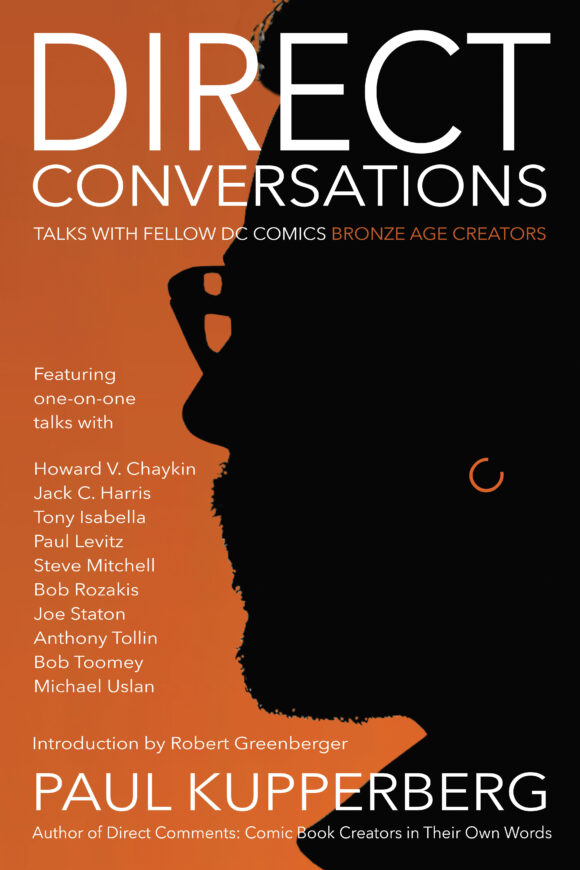

January 7, 2021
Great list, Paul. The absolute best issue of PETER CANNON is the one where the guy has a gorilla hand and he can control gorillas with. If I ever get to do an extended run of THUNDERBOLT I guarantee you that Guy With Gorilla Hand That Controls Gorillas is making a comeback.
January 7, 2021
You refer, of course, to the mighty Gore, the Man-Ape. Is it sad that I didn’t have to Google that?
January 7, 2021
I mean, he *is* pretty memorable
January 7, 2021
I read somewhere that he used the image of John Garfield for Johnny Dynamite!
January 8, 2021
What? No Vengeance Squad? My search for Michael Mauser led me to discovering Morisi’s essential, almost impressionistic, style.
January 8, 2021
Thanks, Paul, for this PAM appreciation. Love the mention of your lunch with Pete and Dick. I second Gene’s shout-out for VENGEANCE SQUAD, That’s the series that first brought me to Morisi’s distinctive work, and made me a fan. In the mid-70s, work by him, Tom Sutton, Don Newton, Sanho Kim, Pat Boyette, Joe Staton, Wayne Howard, and Mike Zeck, and, in fond retrospect, a surprising number of others, made risking splinters to read Charltons worthwhile.
January 18, 2023
I loved Pete Morisi’s Thunderbolt, but I just didn’t think the DC version really captured his version of the character. There’s some real potential in the philosophical underpinnings of the character without going too mystical about it.
And while Vengeance Squad isn’t quite as interesting, it was still a fun read. It could’ve been made into a late 70s/early 80s TV show, a la The A-Team.
But then, Morisi’s clean, sharp style made almost any story worth reading, just to enjoy the artwork. He’s apparently compared to George Tuska a lot, and while I see the similarity, I think he’s really more like a tighter version of Alex Toth.
March 14, 2025
This article popped up while Googling Morisi, an artist I’ve liked since seeing, as a pre-teen, Vengeance Squad reprinted by Modern Comics in 1978. Wiki mentioned that Morisi introduced his good friend Don Heck to Stan Lee; I see both Heck & Morisi’s biggest influence George Tuska as Alex Toth disciples (which makes Morisi one as far as I’m concerned). In the past year, I’ve been buying a lot of vintage westerns and now, having reached the end of affordability of Atlas issues, I’m now on a Charlton western kick. Lots of Morisi on Kid Montana/Montana Kid and Masked Raider. Really dig that clean style, and as they say, if you haven’t seen it, it’s new to you. (Also getting an appreciation for guys like Bill Moon and Rocco Mastroserio on these books. And had no idea the prodigious amount of work Dick Giordano did for the company as early as the early 50s on ALL genres. WOW!!)
Tim Markin
March 14, 2025
Unfortunately, the name of artist Bill Molno was mis-posted as Bill Moon.